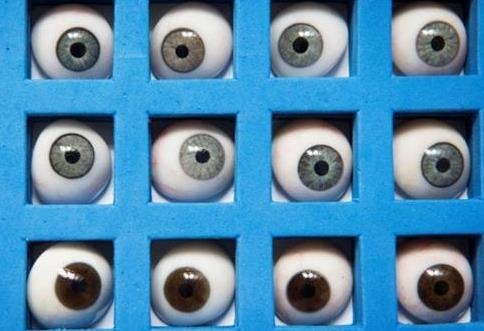Belgian Doctor Makes World's First 3D Print Eyes

According to foreign media, experts from Belgium’s Leuven University’s academic hospital recently used computer-aided design and 3D printing technology to develop the world's first special 3D-printed prosthetic eye for a 68-year-old male patient. The manufacturing cost is only 1300. EUR.
Prior to this, the British Fripp company once claimed that they were able to print fake eye with the development of 3D printing technology, but until now, it still does not seem to be officially put into use.

As we all know, artificial eye manufacturing is hand-made because less demand, and a country often only a few specialists have the ability to create eye protection. The expert at Leuven University Hospital in Belgium can only make about 70 different eyeballs each year. The production process is extremely complicated: the iris needs to be drawn by hand to match the other eye, so it is very difficult to choose the right white for the sclera. Small blood vessels are usually patterned using tiny red cotton threads.
Ilse Mombaerts, professor of eyelid surgery, said: “The eye is a luxury, and the communication with the artist is crucial to the patient's new eye design. The ophthalmologist performing the surgery usually works with the artist who designs the eye.â€
Until now, the use of dental impression materials to obtain an eyelid imprinting mold has been used to create an artificial eye, and the eye sockets it provides are often inaccurate. The traditional method of measuring eye sockets is to use an alginate mold, which at the same time puts a lot of pressure on the delicate tissue of the patient's eye socket. The whole process is very time consuming.

Today, experts use the CBCT (Cone Beam Computed Tomography) scan to create a 3D print model. CBCT is a very common aid in dental surgery. It can model the patient's mouth without causing damage. After the model is printed by the hospital's 3D engineer, it is sent to the eye specialists. The expert then uses this as a reference to manually create a specific eye for the patient. However, the Academic Hospital of Leuven , Belgium , said that due to technical limitations, they are using more of the 3D printing modeling capabilities. It is hoped that the 3D printed prosthetic eyes can be directly used in the future using carbon materials commonly used in dentures.

Low Voltage Static Synchronous Compensator
FGI`s FGSVG series low voltage dynamic reactive power compensation and harmonic devices are mainly composed of control panels, energy storage capacitors, reactors, IGBT, inverters, fuses and other devices. The low voltage Static Synchronous Compensator (STATCOM) has functions such as compensating reactive power, controlling harmonics, balancing negative sequence current and suppressing voltage flicker.
Svc Static Var Compensator,Low Voltage Synchronous Compensator,Low Voltage Static Compensator,Low Voltage Static Synchronous Compensator,Statcom Manufacturers,Power Quality Products
FGI SCIENCE AND TECHNOLOGY CO., LTD , https://www.fgi-tech.com